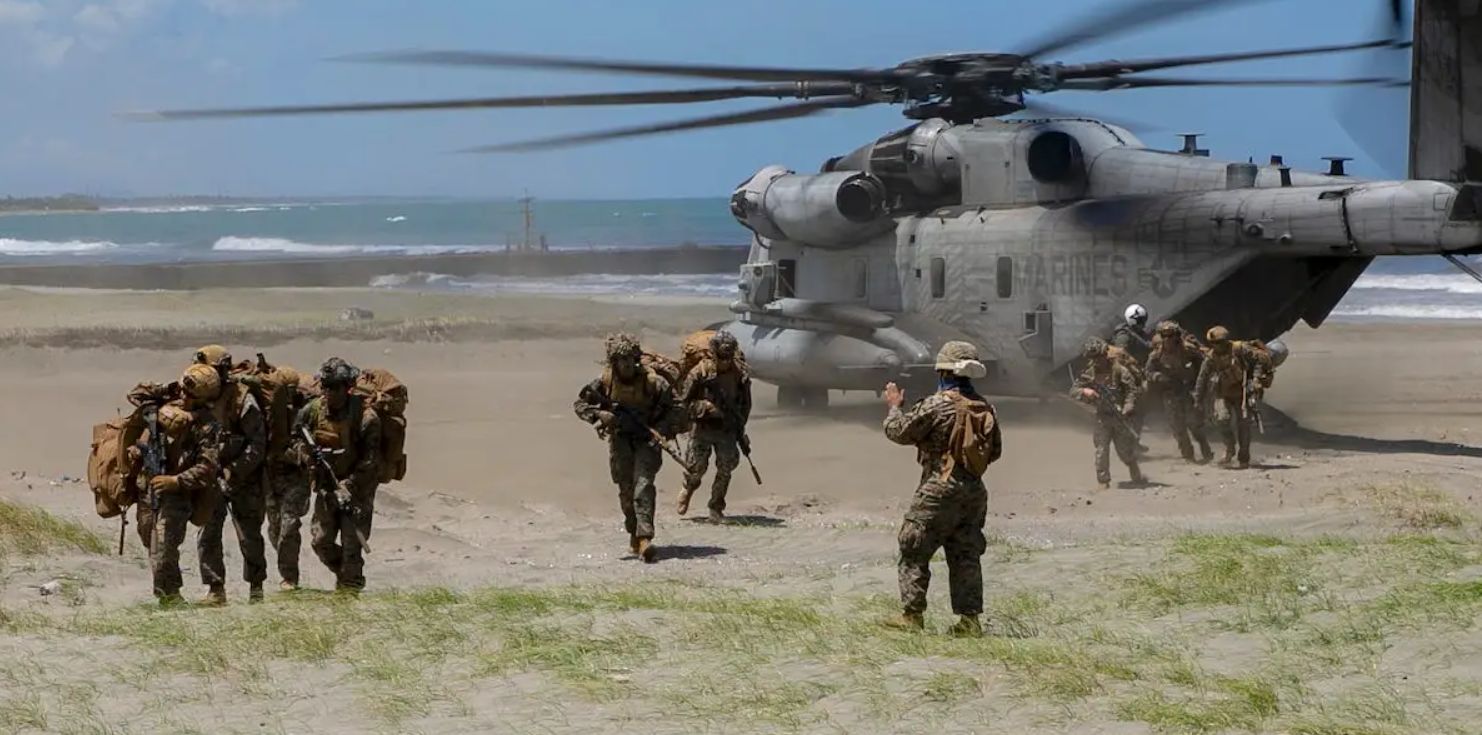The United States has been granted access to a tiny island portion of the Philippines in the Cagayan region as part of the Enhanced Defense Cooperation Agreement (EDCA), as Washington pushes Manila to allow military infrastructure on the islands.
Lying just 250 miles (400 km) south of Taiwan, Fuga Island can potentially harass the southern flank of a Chinese naval attack on Taipei with anti-ship missiles and possibly even an air base.
It is adjacent to two key passages – the Luzon Strait and the Bashi Channel – which provide access to the South China Sea and the Pacific. China perceives American submarines as possibly using the Straits to enter the northern end of the SCS and has been practicing anti-submarine warfare (ASW) drills in the area.
Similar efforts are underway to base US Marine Littoral Regiments and Japan Self-Defense Forces military detachment on its southwesterly Nansei/Ryukyu islands, which are close to Taiwan’s northeastern seaboard.
China has protested the EDCA and the possibility of the Philippines hosting US military assets calling it destabilizing and drawing nations into geopolitical camps.
From Chinese ‘Smart City’ To Military Base
Interestingly, the island was being acquired by a Chinese company to be developed into a $2 billion-worth ‘Smart City’ project, complete with dazzling commercial, technology, and IT parks.
The Philippines government, in 2019, however, decided to earmark the land for a naval detachment and other military facilities there. Personnel from the Philippines Navy and Marines are now based there.

This followed resistance in the Philippines’ security establishment that raised the alarm over the Chinese getting a permanent surveillance and listening post in their country.
“The People’s Liberation Army Navy (PLAN) used this route during the recent Taiwan crisis,” retired Rear Admiral Rommel Jude Ong was quoted in a report in The Guardian, referring to China’s exercises near Taiwan in August 2022. Ong is presently a professor at the Ateneo School of Government in Manila.
The US has, however, been unable to articulate precisely the kind of military threat Chinese economic projects pose. The warnings have been framed in vague terms of “expansionism” and harming the “rules-based order.”
Locals – Caught Between War & Poverty
The Guardian also captured the mood among government officials and locals on the island alike. Broadly apprehensive of the US and China drawing their homes into a war, they are also worried about their economic prospects, which are not very bright in the poor region.
The villagers survive mostly on animal husbandry, agriculture, and fisheries, with little to no lucrative industrial activities.
However, the sudden basing of a Philippine marine and Navy base has brought economic and infrastructural benefits. Boat and ferry-bound supply runs are more frequent. The marines carry a power generator, and a television set at the marines’ base draws crowds in the evening, according to Fuga village chief Melchor Visario.
The roughly 2,000 residents of the village have a patchy internet service and small solar units to run lights and charge their phones.
Other residents say they would welcome any US troops to their villages and homes, indicating that they are looking for business opportunities by supplying and doing odd jobs for the American military.
Surprisingly, this also aligns with the US Marine Corps’ (USMC) own logistics concept, where units based on far-flung islands in the western Pacific are expected to source food, fuel, and construction material locally, as much as possible, on a cash-and-carry basis.
Called “expeditionary foraging” by USMC Assistant Commandant General Eric Smith, he explained how it saves the strain on the existing logistics infrastructure ferrying material between the second and first island chains.
This is in light of the US military’s officially admitted logistical difficulties arising from the vast distances between the islands and the operational area, which might be the reason for a massive defeat in a war with China. Logistics is one reason, and China’s technologically advanced military, which can be more than a match even for a logistically strong US military, is another.

Military Exercises With The US In Full Swing
Meanwhile, the Philippines and the Americans continue formidable military exercises, sending a signal to China and Philippine nationals wary of Beijing’s influence.
In March 2022, Appari, the municipality where Fuga lies, hosted war games by the Philippine and US militaries on its shores. Helicopters, amphibious assault ships, and a surface-to-air missile defense system were displayed to exhibit a coastal defense strategy, enthralling residents.
Last week, US Air Force (USAF) F-22 Raptors exercised with Philippine Air Force (PAF) FA-50 jets in what was described as basic maneuvers aimed at the Americans familiarizing themselves with the local geography and terrain. This laying of the groundwork suggests that the US push for a regional military base is steady and persistent.
- The author can be reached at satamp@gmail.com
- Follow EurAsian Times on Google News




